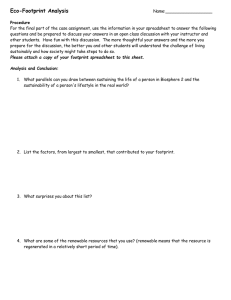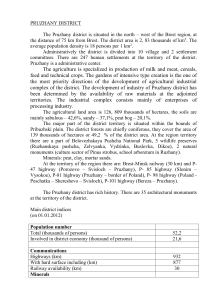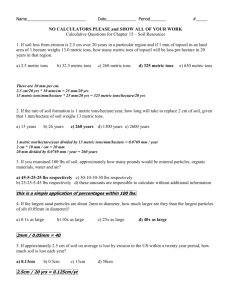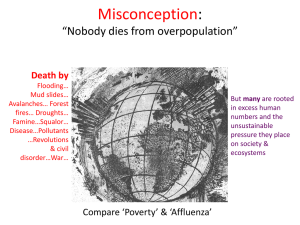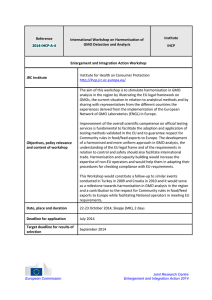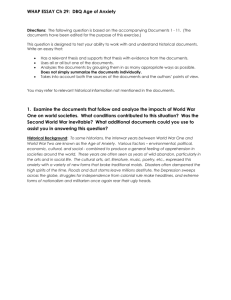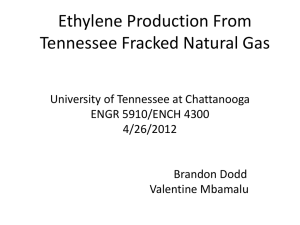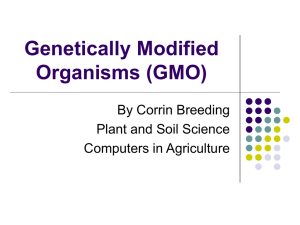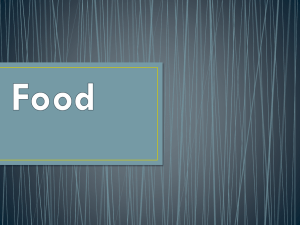World`s Population and Food Supply
advertisement
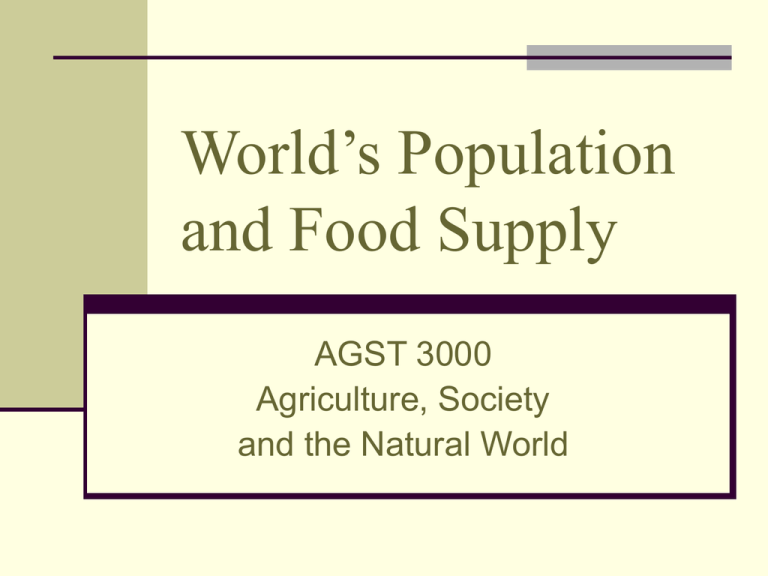
World’s Population and Food Supply AGST 3000 Agriculture, Society and the Natural World I. World Population Increases A. Currently 6 billion people in the world B. 8000 BC 5 million people in the world 1. It took 9500 years for the population to get to 500 million (from 8000 BC to 1500 AD to multiply by 10) 2. Between 1600 and 1856 world population doubled (1 billion in 200 years) 3. From 1856 – 1930 population doubled again (2 billion in 80 years) 4. From 1930 – 1975 population doubled again (4 billion in 45 years) Today • The world’s population surpassed six billion in October, 1999 (6.2 today), and grows by nearly 80 million per year (approximately the population of Germany). • Ninety-seven percent of all population growth is occurring in the poorest parts of the world. • By 2015, 23 cities will have more than 10 million inhabitants; 19 of them will be in developing countries. II. World Food Needs A. Population and income are the major factors in determining food consumption 1. World food demand is growing at a rate of 2% per year – 1.8% of this because of population increase and .2% because of rising incomes Imbalanced consumption vs. population 20% of the global population consumes 70% of its material resources and possesses 80% of the wealth. Source: World Wildlife Fund The majority of this 20% in centered in Canada, USA, Saudi Arabia, Australia, and Japan. Source: World Wildlife Fund 2. Difference in specific countries a. Poorest countries (Africa, Asia, and Latin America) 2.5% increase in demand, but only a 1.9% increase in supply. b. These countries typically depend on US, Canadian and Australian grain supplies. c. The US produces: 32% of all international trade in wheat, 68% of all coarse grains (corn and sorghum), and 17% of all rice 3. Food production is not the problem – is food distribution the problem? a. inadequate infrastructure – roads, communication, fuel b. lack of access to scientific knowledge (research and extension service non-existent) c. government interference in market forces – wars, political turmoil, changing government structure, corruption. -remember Afghanistan, Zimbabwe, Haiti d. But recent study suggests that distribution of food might not be the problem…instead an unequal distribution of wealth…why do you think this might be true? Food issues around the World In 75 nations, per capita food production has declined over the past 15 years. (UN Development Program, Human Development Report 1998.) Why? Among the larger countries where shrinking cropland per person threatens future food security are Nigeria, Ethiopia, and Pakistan, all countries with weak family planning programs. For example, as Nigeria's population goes from 111 million today to a projected 244 million in 2050, its grainland per person will shrink from 0.15 hectares to 0.07 hectares. Food issues around the World continued… Pakistan's projected growth from 146 million today to 345 million by 2050 will shrink its grainland per person from 0.08 hectares at present to 0.03 hectares, an area scarcely the size of a tennis court. Countries where grainland per person has shrunk to 0.03 hectares, such as Japan, South Korea, and Taiwan, each import some 70 percent of their grain. More than three-quarters of a billion people suffer from malnutrition. Food issues around the World continued… Between 1945 and 1990 food production and other human activities degraded nearly three billion acres of vegetated land, an area equal to China and India combined. Two thirds of the most degraded land is in Africa and Asia. Source: World Watch Institute, March 1999 Increasing the World’s Food Supply..How? A. Crop Yields 1. Great disparity between countries a. Wheat Production: Pakistan = 2.1 metric tons per hectare Germany = 6.9 metric tons per hectare b. Corn Production: India = 1.6 metric tons per hectare U.S. = 7.1 metric tons per hectare c. How could production in these countries be increased? 1. “Green Revolution” 1970’s The introduction of high yielding varieties of wheat and rice in Asia doubled or tripled yields… but with environmental and social consequences Increasing the World’s Food Supply..How? 2. Genetic Manipulation: GMO’s (Genetically Modified Organisms) a. Increased yields b. Decrease the need for pesticides c. Neutracueticals d. “Frankenfoods” e. Environmental consequences f. Websites http://students.washington.edu/ebv7777/gmo.html http://www.effectiveoptions.com/GMO/biotechnology.htm http://ohioline.osu.edu/gmo/articles.html Increasing the World’s Food Supply..How? 3. Land Area 1. Land surface = 25% of the earth, the rest is water, polar icecaps 2. Africa and South America have the largest areas of potentially arable land. a. Africa currently farms 20% of its potentially arable land. b. South America farms 10% Increasing the World’s Food Supply..How? Land Area …continued 3. The U.S., Canada, Australia and New Zealand have about 1 billion more acres that could be farmed. a. Land will only be farmed if it becomes economical to do so b. Water availability plays a large role in determining farm land’s productive capacity c. Ecosystem degradation and environmental concerns 4. World population increased by 30% from 1975 – 1990, but land area used to support that population increased only 3.6% 4. Food from the Sea 1. Aquatic products are a very important food source in Japan, Norway, Spain, Iceland, Portugal and Southeast Asia 2. However, fish make up only 1% of the world’s caloric intake and only 6% of all protein 3. Long-term plans for “Farming the Sea” will do little to solve world hunger problems Increasing the World’s Food Supply..How? History….Malthusian dilemma 1. Reverend Thomas R. Malthus, writing in 1798 gained fame for what he called the “principle of population” a. His concept was that food supplies could only increase arithmetically but populations would increase geometrically b. Economic principle based on the “Law of Diminishing Returns” – increasing labor to a fixed amount of land Malthusian dilemma … continued c. 200 years later – both population and food supplies have increased geometrically – Why? Increasing land area for food production – after his prediction (1798)…North America’s potential for food production was not known 1920’s increase in mechanization 1960’s application of scientific principles to agriculture (plant breeding, irrigation, plant protection) Looking into the Future A. As economic growth occurs, populations transition from agricultural (high fertility, large families, high mortality) to industrial (the world’s richest countries have stable or shrinking populations) 1. Fact – World birth rates are decreasing but the population is increasing because people are living longer B. Crucial question “How will food issues be dealt with in the future?” Political leverage, Economic Control? C. Developing uncultivated land i.e. Rainforests, tends to lead to environmental degradation and loss of species variability D. Raising crop and livestock yields - technology In Class Writing Assignment What factors would support the notion that man is doomed on planet earth? What factors might change or what changes might occur that would circumvent the above question? What should the people of developed nations do to help stem starvation in under-developed areas of the world? Why is simply providing technology to under-developed areas of the world not the right answer? Where do you see the greatest potential in solving the issue of food shortages with a growing population on earth?
